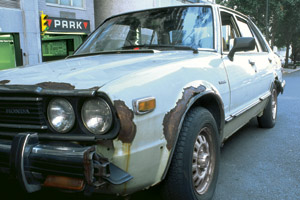
One of Capitol Hill’s current handouts of your money, disguised as a “help program,” is the Car Allowance Rebate System, commonly called “cash for clunkers.” This congressional clinker was set in motion to simultaneously prop up the American auto industry, appease the environmental lobby, and motivate consumers to open their wallets and buy cars by the truckload. The incentive for buyers is a wad of cash for buying a new car that burns less fuel than the “clunker” they trade in.
On July 27, the day the program launched, Edmunds.com poked a hole in Capitol Hill’s fantasy balloon. Citing its own research,Edmunds.comshowed that 200,000 vehicles worth less that $4,500 are typically traded in every three months. So the net gain over the 250,000 clunkers forecasted to be taken off the road by this program in three months will only be 50,000-at a cost to the taxpayers of roughly $20,000 each ($1 billion/50,000 vehicles). “In effect, we are paying consumers to do something most would do anyway,” said Jeremy Anwyl, CEO of Edmunds.com.
There are unintended consequences as well. Writing recently in The Wall Street Journal, Kevin Helliker says dealers that take in clunkers under this program are required to destroy the engines using a method the government outlines in a 136-page manual. They have to drain the oil, pour in a sodium silicate solution, and run the engine until it seizes. The internal damage is irreversible. Then the entire vehicle must be shipped to a junkyard. Whether any other parts of the vehicles can be legally salvaged is problematical, but the adverse economic impact on the aftermarket and repair segment of the automotive industry-especially those companies that remanufacture engines-is likely to be serious. Not to mention the collision repair shops that depend on obtaining useable doors, hoods, deck lids and other body parts from salvage yards. Helliker’s piece-and the 139 comments-are worth your time. Here’s thelink.
Meanwhile, knowing how car dealerships operate, one might reasonably suspect that some of that cash actually ends up in the pockets of dealers by way of cleverly manipulating the selling price.
Although automakers are ramping up production to meet demand,Autoline Dailyreports that the American auto industry faces a steel shortage that could hurt automakers just as they plan to boost production. When automakers began cutting production late last year steel demand plummeted and many steel mills slowly closed down, and now there’s a shortage. How this will affect the ongoing clunkers program remains to be seen.